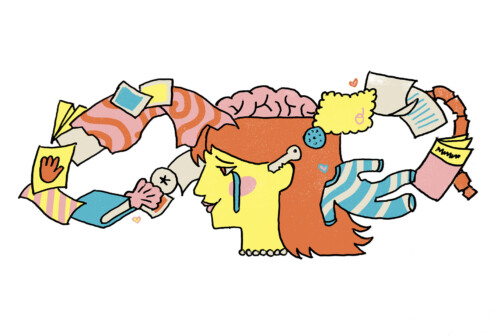
Last night I was able to attend the Dallas Bike Plan open house at City Hall for what was a standing room only house in the Council Chambers. At first that seems impressive until you think that a City of over 1 million only has about 200 people or so attending a public hearing. /200 is an estimate. I have no idea how many people the council chambers holds.
Having run a number of similar public workshops and open houses, I was well aware of what to expect. These things are always feel good moments for those running them. Why? Because everyone responsible for getting a particular study/proposal moving forward have a conception in their own mind of what the result could/should/or would be. The arguments are yet to be had when those various visions begin to intersect or compete. The challenge is always marshaling the various powers that be into one cohesive direction.
Since I don’t feel like organizing this into one cohesive narrative (and at this point it probably shouldn’t be until the plan gets some actual vision to it), I’ll leave you with the good and the bad from the evening:
THE GOOD:
The Mayor and the councilmembers who showed up, some of whom even stuck around until the end. This effort definitely seems to have their full support and the Mayor gets an A+ from me for acknowledging that this is one step towards densification and a more sustainable, prosperous City.
THE BAD:
The excruciating half hour of acknowledgements, back-patting, and self-congratulatory remarks before the presentation even started. I understand that some credit is due for steering the tremendous inertia of car-oriented commuting in the right direction, but let’s not count our chickens before their hatched. Will you stand up to transpo or DOT when they shrilly scream, “OMG, we won’t hit level of service A if you remove that lane of traffic! We have arbitrary formulas that prove it!!!!11” Hmm?
THE GOOD:
Toole Design. We hired the right people. I was very impressed when they stressed that this wasn’t a trails plan. We have trails and we have plans to connect them. This is a roads plan for bicycle lanes and cyclist safety.
THE BAD:
Don’t limit or censor yourself already Toole. More than a few times they showed a few examples of road treatments prioritizing the safety of cyclists and/or pedestrians over car movement where the setting was either foreign or the solution was deemed too radical for Dallas. Already. Push the envelope. Have no fear. We need a broad range of context-appropriate solutions to deal with our road network appropriately. When Dallas gets behind something it gets behind it all the way. Just look at our road and highway system. World class!!!
THE GOOD:
The crowd as mentioned before was enthusiastic, engaged, and well…there.
THE BAD:
I would guess at least 90% are the hardcore enthusiasts that bike already. The plan isn’t about them (although their safety is a part of it as well), although their enthusiasm is what made it happen in the first place and what have to sustain in order to carry it through to realization.
While education is an important part of safety, this isn’t about bringing all cyclists up to your level of expertise in navigating Dallas traffic. This is about winding Dallas traffic down while simultaneously supplying the accommodations so that everyone else that wasn’t there, or doesn’t currently bike because they are intimidated can feel safe cycling to work or wherever rather than using their car, the petrol to power that car, and the space to park that car.
THE GOOD:
Toole showed images of a number of concepts that I whole-heartily encourage, including:
- Sign Pollution – Signs are ugly and litter the landscape/streetscape. Signage should always be supplementary and good design and wayfinding should be largely intuitive. Otherwise, it just isn’t a good design and signage is what is used to cover up those faults. I loved the painted bicyclist on the stone paver. Yes, plz.
- Back-in Angled Parking – I was around this concept when it was first created while I interned with traffic calming gurus Walter Kulash and Ian Lockwood. Those two probably had as much of an impact on my understanding of cities as anybody. Lesson: no matter your field, it is always good to work with experts in other fields and it is your job to find the tangential relationship.
- Bike Green Lights at traffic signals. I like that they give at least equal priority to cyclists as a mode of traffic on the streets. My idealistic vision would be that they aren’t necessary however.
- Trail/Road Crossings – These are important and as Toole pointed out, sometimes the right-of-way is given to drivers and the yield to cyclists, sometimes vice versa. This is critical though, because our reflexive solution is always changing planes by way of bridges. Stupid.
- I like the idea of protected bike lanes uphill and shared lanes with cars downhill. We’re not exactly Seattle, but this was a good idea for how to smartly design when you only have a few feet to play with.
- Routine Accommodation – Much of this work can be done with simple restriping or repaving which occurs every few years anyway as part of the ordinary transpo budget ameliorating worries of increased cost. Of course, I say we just rip up all of the macadam and expose the brick under so many of our streets.
THE I’M NOT READY TO SAY GOOD OR BAD YET:
I saw a lot of mention of street sections, but as Toole pointed out the biggest conflict point, where accidents occur most often, is at intersections. Two things to this:
- Sections are important, but too often a road gets one section and that section is then extruded for whatever length of the street. The section should vary based on context. For example, much of our city is based on 1-mile square arterial grid. The intersections are where neighborhood retail has clustered in the form of strip centers. These areas need to densify. The intersections are the nodes of place and changing the road section here should be different than the road section between it and the next node 1-mile away. This area between is the ‘link’ and should be designed as such.
- I will be most interested to see if there are recommendations for intersections drawn in plan, or from above. Too many of our intersections are designed with curb radii that are too large allowing for “rolling stops” or cars to roll right thru stop signs or red lights when turning right. In the future cyclists very well might be there. I believe the idea of “cycle boxes” is meant to address this by putting cyclists’ stopping point out in front of cars where they are then moved further back from the intersection to ensure sight of the cyclists who are at greater risk of personal injury.
THE WHERE ARE WE GOING:
I want measurable goals. In fact, this City needs measurable outcomes. For example, Copenhagen established a goal that they want 0, that is ZERO traffic fatalities in a year. That is a clear, measurable outcome. In that way, we have something to weigh policy and approach. We get too driven by ideology that we lack the ability to go back and determine what worked or what didn’t. The lack of these is why we as a city tend to spin in circles like a spastic canine rather than in one concerted, positive direction (ya know other than council districts as vassal fiefdoms).
What those are yet I don’t know (the goals board was always too crowded so I couldn’t tell how specific they got), let’s let Toole arrive at those but here might be some examples:
- By xxxx year, Dallas will have the greatest percentage of bicycle commuters to work of any city in the country over 250,000 people; or
- By xxxx year, Dallas will have the highest percentage of bicycle/pedestrian/non-automobile commuters in the country per capita.
- By xxxx year, Dallas will have more protected bike lanes than any other city in the country.
- By xxxx year, Dallas will have removed more lanes of car-only traffic than any other country.
- By xxxx year, areas within 3-5 miles (logical bicycle commuting distance) Dallas has densified its core at a greater rate than any other City in the country.
Those are all long-term, and there need to be short- and mid-term goals as well, but without clear, measurable outcomes (on any policy or directive), we are like Sammy Jankis continually getting electro-shocked everytime we pick up the star-shaped metal object. Then we just end up killing our wife unwittingly, breaking out of a mental institution, and then “solving” the mystery of who killed our wife by going on a mass-murdering spree. And that would be no good.
Remember Sammy Jankis, ya effing quacks.







